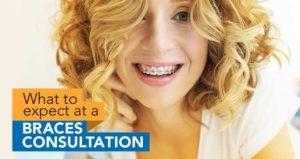Legacy Orthodontics for Beginners
Legacy Orthodontics for Beginners
Blog Article
The smart Trick of Legacy Orthodontics That Nobody is Discussing
Table of ContentsLittle Known Facts About Legacy Orthodontics.Legacy Orthodontics Fundamentals ExplainedThe Best Strategy To Use For Legacy OrthodonticsWhat Does Legacy Orthodontics Do?The Single Strategy To Use For Legacy Orthodontics
At Advanced Orthodontics, we give patients with a holistic therapy experience. Additionally, we provide flexible therapy routines, adaptable payment options and an enjoyable, delightful experience. orthodontics. Call ( 480) 357-4900 today for more details and routine an appointment.An orthodontist is a dental practitioner educated to identify, prevent, and deal with teeth and jaw irregularities. Orthodontists function with people of all ages, from youngsters to adults.
Malocclusion, or misaligned teeth, can lead to oral problems, consisting of dental cavity, gum illness, and challenging or painful eating. Not everyone is birthed with straight teeth. If you have a bad bite or large spaces between your teeth, you might want to get in touch with a dental practitioner focusing on orthodontic treatment.
Legacy Orthodontics Can Be Fun For Everyone
( Picture Credit Report: DigitalVision/Getty Images) Orthodontists utilize dealt with and detachable dental gadgets, like braces, retainers, and bands, to transform the placement of teeth in your mouth. Orthodontic treatment is for oral problems, including: Misaligned teethBite issues, like an overbite or an underbiteCrowded teeth or teeth that are also far apartJaw misalignmentThe objective of orthodontic treatment is to boost your bite.
A healthy bite ensures you can eat, chew, and talk correctly. While you might think of orthodontists as mainly for children or teens who require dental braces, they can remedy oral troubles at any age. Orthodontists go to college, oral college, and orthodontic school. After graduation, they spend 2 or 3 years in an orthodontic residency program.
All orthodontists are dental practitioners, however not all dental experts are orthodontists. Orthodontic residency programs supply extensive, focused direction for dental experts. They focus on two areas: How to properly and safely move teeth Just how to effectively lead growth in the teeth, jaw, and faceOnce an orthodontist has actually finished training, they have the choice to become board certified.
The Main Principles Of Legacy Orthodontics
Imbalance, or malocclusion, is one of the most typical factor people see an orthodontist. It is hereditary and is the result of size distinctions between the upper and reduced jaw or between the jaw and teeth. Malocclusion brings about tooth congestion, a twisted jaw, or irregular bite patterns. Malocclusion is normally treated with: Your orthodontist attaches steel, ceramic, or plastic square bonds to your teeth.
Some people need a headgear to aid move teeth into line with stress from outside the mouth. A retainer is a custom tool that maintains your teeth in area.
They're most frequently utilized on kids. They can produce extra room in the mouth without having to pull teeth. If you have a major underbite or overbite, you might need orthognathic surgery (also called orthodontic surgery) to extend or shorten your jaw. Orthodontists make use of cords, surgical screws, or plates to sustain your jaw bone.
You might need to see an orthodontist if you have: Crowding or otherwise sufficient space for all of your teethOverbite, when your upper teeth come over your base teethUnderbite, when your bottom teeth are too far forwardSpacing link or concerns with gapsCrossbite, which is when your upper teeth fit behind your bottom teeth when your mouth is closedOpen bite or an upright gap between your front base and upper teethMisplaced midline, when the center of your base and upper teeth don't align Remedying a dental malocclusion can: Make attacking, eating, and speaking easierImprove the proportion of our face and your general appearanceEase pain from temporomandibular joint problemsSeparate your teeth and make them easier to cleanse, helping prevent tooth degeneration or cavities It's typically a dental practitioner who first notifications misaligned teeth during a routine examination.
The Only Guide for Legacy Orthodontics

Throughout your very first orthodontic examination, you'll likely have: A dental examPhotos taken of your face and smileDental X-raysPanoramic (360 level) X-rays of your face and headImpressions to create mold and mildews of your teethThese examinations will certainly help your orthodontist know just how to wage your therapy. leesburg orthodontics. An orthodontist is a dentist that's had training to treat your teeth and jaw
An orthodontist is concentrated on your bite, so something like a chipped tooth would be taken care of by a dental practitioner. Orthodontists are focused on your bite, or the way your teeth fit together, and the straightness of your teeth.
Ever before asked yourself how stars constantly appear to have flawlessly aligned teeth? The answer typically exists in the skilled hands of an orthodontist. What precisely does an orthodontist do? Orthodontists are dental experts that concentrate on dealing with abnormalities in the teeth and jaws. Their knowledge exceeds just producing a gorgeous smile; it reaches boosting your overall dental health and function.
The Facts About Legacy Orthodontics Revealed

While braces are one of the most commonly acknowledged orthodontic therapy, orthodontists have a varied toolkit at their disposal. The particular strategy picked depends on the extent of the case, the client's age, and specific choices. These tried-and-true braces use a system of braces bonded to the teeth and connected by cords.
Clear aligners, like Invisalign, are a preferred option for patients seeking a more very discreet therapy option. These detachable trays are custom-made to progressively shift the teeth's placement. Headwear might be used together with braces or aligners to apply added targeted pressures, especially for dealing with jaw disparities. In instances of slim jaws, palatal expanders can be made use of to develop room for correct tooth placement.
Report this page